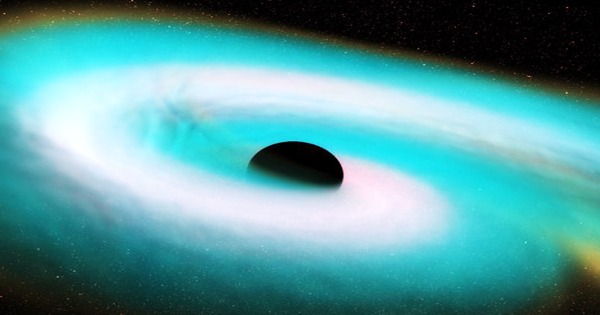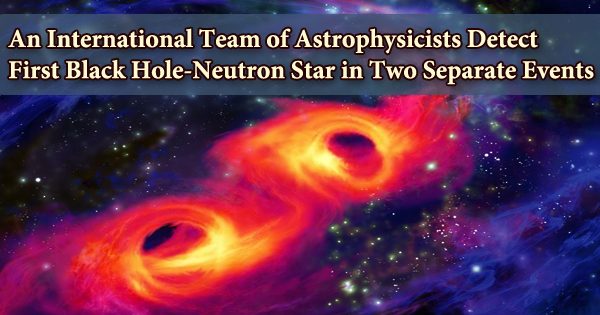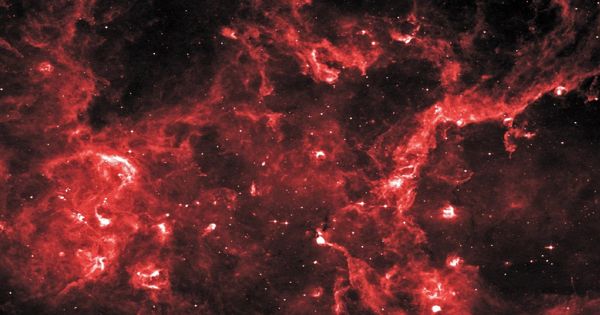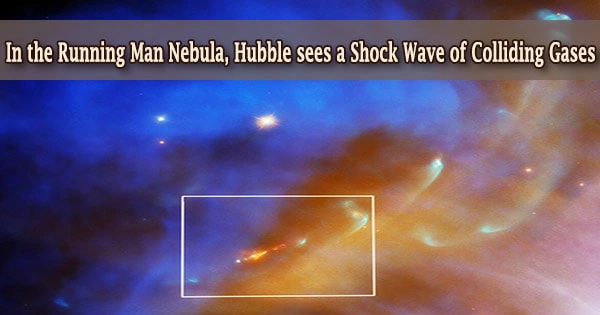Two black holes ate their neutron star companions a long time ago in two galaxies roughly 900 million light-years apart, causing gravitational waves that finally impacted Earth in January 2020. The first black hole-neutron star mergers were discovered by an international team of astrophysicists, including two Northwestern academics. The researchers discovered two independent collisions between a black hole and a neutron star. The two new gravitational wave incidents in January 2020, which occurred 10 days apart, are the first “confident observations” of their kind. Researchers can now estimate the frequency of these events in the cosmos, according to the press release.
Researchers will be able to draw the first inferences regarding the genesis of these unusual binary systems and how often they merge based on the data. Violent star death produces both neutron stars and black holes. When stars die, they lose mass and become more dense until they collapse in a supernova explosion, depending on their size. Some become inexhaustible black holes that devour everything in their path, while others leave behind a neutron star, which is a dense remnant of a star that is too tiny to become a black hole.
“Gravitational waves have allowed us to detect collisions of pairs of black holes and pairs of neutron stars, but the mixed collision of a black hole with a neutron star has been the elusive missing piece of the family picture of compact object mergers,” said Chase Kimball, a Northwestern graduate student who co-authored the study. “This picture must be completed in order to constrain a variety of astrophysical hypotheses of compact object formation and binary evolution. These models’ predictions of the rates at which black holes and neutron stars merge are built into them. With these detections, we finally have measurements of the merger rates across all three categories of compact binary mergers.”

Astrophysicists have seen two black holes collide with two neutron stars in different occasions before, but never the two collided at the same time.
“We long thought they exist, but this is the first direct confirmation that will help fine-tune future astrophysical models of stellar populations in our universe and how their remnants interact with each other,” Kimball said.
The findings will be published in the Astrophysical Journal Letters on June 29. Researchers from the LIGO Scientific Collaboration (LSC), the Virgo Collaboration, and the Kamioka Gravitational Wave Detector (KAGRA) project are also part of the collaboration. Kimball, a member of the LSC, conducted the computations of the merger rate estimates and how they fit into expectations from various neutron star and black hole production paths. He also participated to discussions regarding the discovery’s astrophysical ramifications.
Vicky Kalogera, director of the Center for Interdisciplinary Exploration and Research in Astrophysics, said “the merger may have involved the most massive neutron star known.”
The team is currently preparing for its next observation run, which will begin in the summer of next year. Despite the discovery, Maya Fischbach, a NASA Hubble Fellowship Program Einstein Postdoctoral Fellow, stated there are still many unknowns. On January 5, 2020, and January 15, 2020, the team observed two new gravitational-wave events named GW200105 and GW200115 during the second half of the LIGO and Virgo detectors’ third observing run, known as O3b. Despite many follow-up observations by multiple observatories, none of them saw light from either explosion, which is consistent with the measured masses and distances.
Neutron stars can be as small as 20 miles in diameter, but they are so dense that a teaspoon-sized scoop would weigh more than Mount Everest. When one celestial object orbits another, neutron stars are sometimes created as a pair in binary star systems. Binary pairings were previously only seen as two neutron stars or two black holes.
“Following the tantalizing discovery, announced in June 2020, of a black-hole merger with a mystery object, which may be the most massive neutron star known, it is exciting also to have the detection of clearly identified mixed mergers, as predicted by our theoretical models for decades now,” Kalogera said. “Quantitatively matching the rate constraints and properties for all three population types will be a powerful way to answer the foundational questions of origins.”
Albert Einstein predicted the presence of gravitational waves, which are ripples in spacetime that occur when the universe’s most massive objects meet, more than a century ago. When two black holes collided in September 2015, the U.S. Laser Interferometer Gravitational-Wave Observatory (LIGO) observed gravitational waves for the first time. The collisions and resulting gravitational waves provide a rare view into how cataclysmic cosmic explosions like the black hole-neutron star collision affect space-time expansion and contraction, an observation that has never been seen previously in the embryonic field of gravitational-wave astronomy.
Black holes are constricted space areas where gravitational forces are so powerful that not even light can escape. Neutron stars are the corpses of huge stars 10 to 30 times as massive as the sun. According to Kimball, when these cosmic objects clash, they spiral around each other “like a dance,” releasing gravitational waves until they crash. GW200115, which originated from the merging of a 6-solar mass black hole and a 1.5-solar mass neutron star around 1 billion light-years from Earth, was observed by all three big detectors (both LIGO instruments and the Virgo instrument). The direction to the waves’ origin may be determined to a region of the sky equivalent to the area covered by 2,900 full moons using measurements from three widely separated detectors on Earth.
Scientists have observed neutron stars colliding with one another and black holes clashing, but they have never observed a black hole devouring a neutron star. They felt it was feasible, but there was little proof until gravitational wave detectors known as interferometers offered strong proof. Just 10 days earlier, LIGO detected a strong signal from GW200105, using just one detector while the other was temporarily offline.
While Virgo was also watching, the signal was too faint in its data for it to be seen by Virgo. The astronomers deduced from the gravitational waves that the signal was created by a 9-solar-mass black hole merging with a 1.9-solar-mass compact object, which they eventually determined to be a neutron star. At a distance of around 900 million light-years from Earth, this merger occurred. Lasers are fired through interferometers, which are two-mile-long L-shaped pipes. Gravitational waves interfere with the laser’s course when they pass through the detectors. The detectors are ultra-sensitive, catching disturbances as small as a subatomic particle’s width.
Within a billion-lightyear radius of Earth, researchers believe violent neutron star-black hole collisions occur at least once a month. More of these collisions are likely to be identified once LIGO and VIRGO are upgraded. Researchers hope to see a neutron star ripped into light fragments when it is devoured by a black hole. While the origins of these binary systems are unknown, astronomers have identified three possible cosmic sources: stellar binary systems, intense stellar environments such as young star clusters, and galaxies’ centers.
















